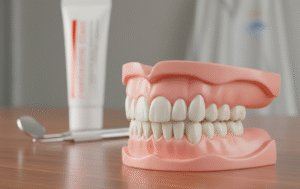A root canal procedure is a common dental treatment designed to save a tooth that is severely decayed or infected. While many people may feel apprehensive about the procedure, understanding the process and its timeline can alleviate much of the anxiety associated with it.
Root canals are known for being efficient and effective, but the time they take can vary based on factors like the tooth’s condition and the complexity of the case. This article explores the duration of a root canal procedure, what to expect during each step, and how you can prepare for a smooth experience.
What Is a Root Canal Procedure?
A root canal treatment addresses issues within the pulp of the tooth, which is the innermost layer containing nerves and blood vessels. When the pulp becomes inflamed or infected due to deep decay, cracks, or trauma, it can cause significant pain and lead to abscesses if untreated.
The root canal procedure removes the infected pulp, cleans and disinfects the root canals, and seals the tooth to prevent future infections.
How Long Does a Root Canal Procedure Take?
1. Single Visit Root Canal
For straightforward cases involving a single canal (such as in front teeth), the procedure can typically be completed in one visit lasting 30 to 90 minutes.
2. Multi-Visit Root Canal
For more complex cases or teeth with multiple canals (such as molars), the procedure may require two or more visits. Each appointment may last 60 to 90 minutes, with a week or two between visits to allow for healing or additional treatment.
3. Factors Affecting the Duration
The time required for a root canal procedure depends on several factors:
- Tooth Location: Front teeth have one canal, while molars can have three or more, making them more time-consuming.
- Extent of Damage: A severely infected or damaged tooth may require additional cleaning or treatment.
- Complications: Calcified canals, curved roots, or infections may prolong the procedure.
What to Expect During a Root Canal Procedure
1. Consultation and Diagnosis
The process begins with a consultation where the dentist examines your tooth, takes X-rays, and confirms whether a root canal is necessary.
2. Anesthesia
Local anesthesia is administered to numb the tooth and surrounding area, ensuring a pain-free experience.
3. Access Opening
The dentist creates a small opening in the tooth to access the infected pulp.
4. Cleaning and Shaping
Using specialized tools, the dentist removes the infected pulp and cleans the root canals thoroughly. The canals are then shaped to prepare them for filling.
5. Filling and Sealing
Once cleaned, the canals are filled with a biocompatible material, typically gutta-percha, and sealed to prevent future infections.
6. Restoration
Depending on the tooth’s condition, a temporary or permanent filling is placed. In most cases, a dental crown is recommended to restore the tooth’s strength and appearance.
Post-Procedure Recovery and Care
After a root canal, you may experience mild discomfort or sensitivity for a few days, which can be managed with over-the-counter pain relievers and good oral hygiene. Follow-up visits may be necessary to monitor healing and place a permanent crown if required.
To ensure a successful recovery:
- Avoid chewing on the treated tooth until the final restoration is complete.
- Maintain proper oral hygiene, including brushing, flossing, and regular dental check-ups.
- Avoid hard or sticky foods that can damage the restoration.
Benefits of Root Canal Treatment
- Pain Relief: Eliminates the source of pain caused by infection or inflammation.
- Tooth Preservation: Saves the natural tooth, preventing the need for extraction.
- Improved Functionality: Restores the tooth’s function for chewing and speaking.
- Aesthetics: Maintains the appearance of your smile by preserving the tooth structure.
Hummingbird Dental: Richmond Hill’s Leading Emergency Dental Clinic
When a dental emergency strikes in Richmond Hill, Hummingbird Dental is the clinic you can count on for immediate, high-quality care. Located at 10376 Yonge St #202, Richmond Hill, ON L4C 3B8, Hummingbird Dental is renowned for its responsive and compassionate approach to emergency dental situations. Whether it’s a sudden injury, a painful toothache, or a dental issue that needs urgent attention, the experienced team at Hummingbird Dental is ready to help.
Contact Hummingbird Dental at +1 647-370-2024 or via email at info@hummingbirddental.ca to receive the emergency dental care you need. Their team is dedicated to providing quick and effective treatment to alleviate pain and protect your oral health.
FAQs About Root Canal Procedures
1. How do I know if I need a root canal?
Common signs include persistent toothache, sensitivity to hot or cold, swelling, discoloration, and tenderness in the gums. A dentist can confirm the need for a root canal with an examination and X-rays.
2. Can a root canal be done in one visit?
Yes, straightforward cases can often be completed in a single visit. However, more complex cases may require multiple appointments.
3. Is the procedure painful?
Modern root canal procedures are virtually pain-free due to advancements in anesthesia and technology. Most patients report feeling little to no discomfort during the treatment.
4. How long does it take for the tooth to heal after a root canal?
Healing typically occurs within a few days, though mild sensitivity may last for about a week. Proper care and follow-up appointments ensure a smooth recovery.
5. Do I need a crown after a root canal?
In most cases, a dental crown is recommended to protect and strengthen the treated tooth, especially for molars or teeth with significant damage.
Conclusion
A root canal procedure is a time-efficient and effective solution for saving damaged or infected teeth. While the duration of the procedure can vary based on the tooth’s condition and complexity, most treatments are completed within one or two visits.
By understanding the process and what to expect, you can approach your root canal appointment with confidence. The key to a successful outcome lies in following your dentist’s instructions, maintaining good oral hygiene, and attending regular dental check-ups.
Root canals not only relieve pain and restore functionality but also preserve your natural teeth, ensuring a healthier and more confident smile for years to come.










